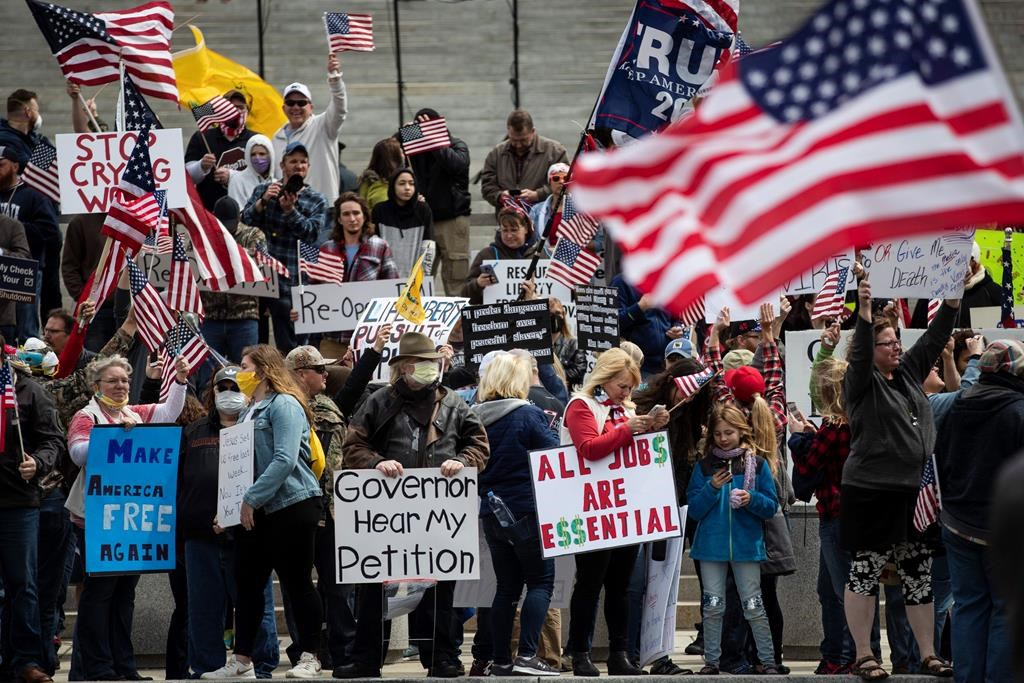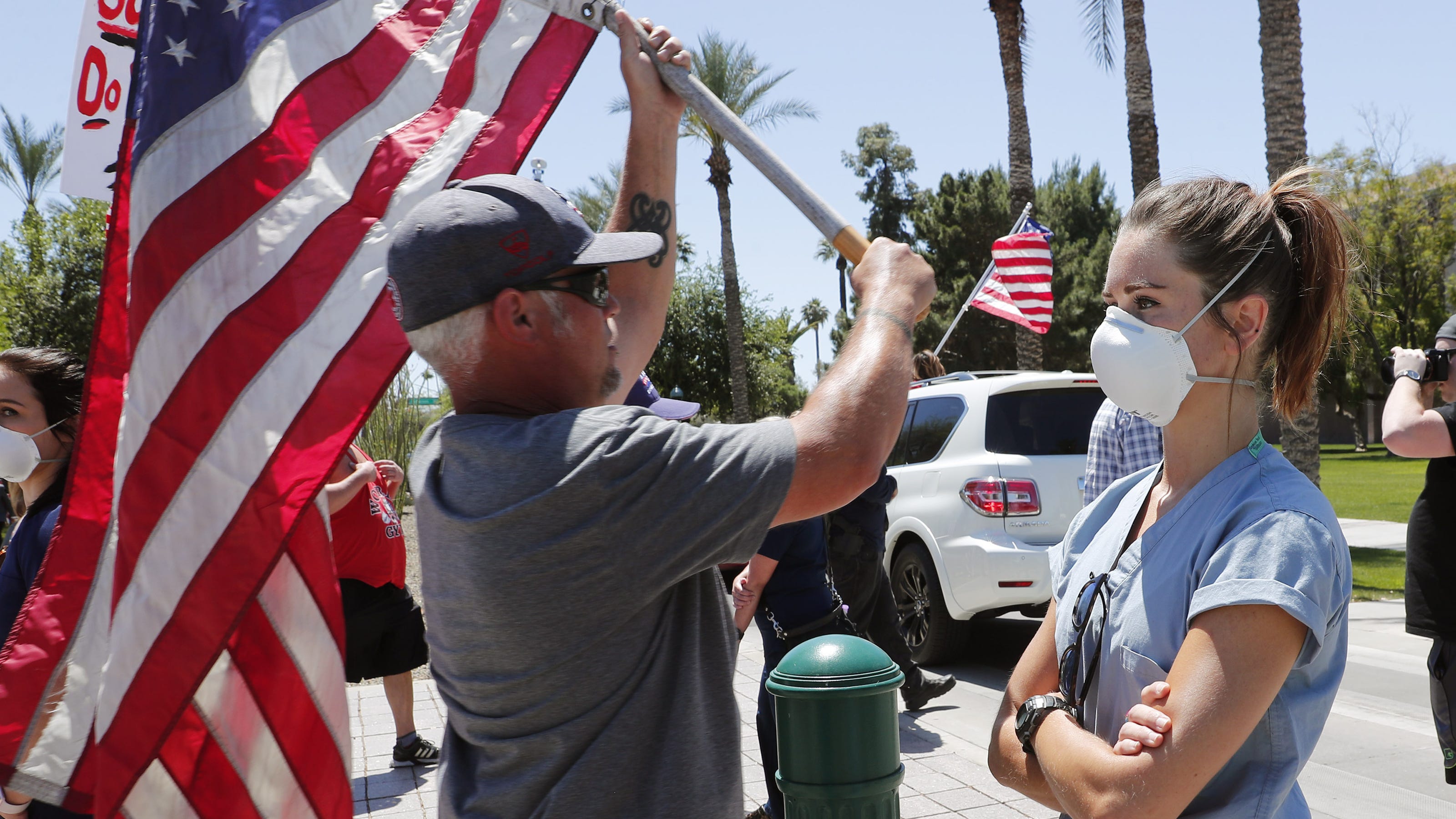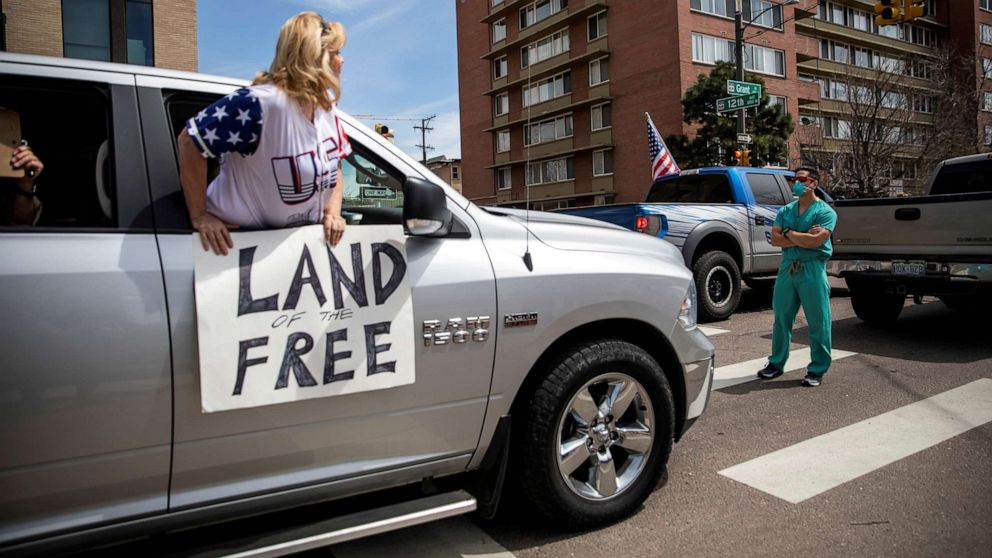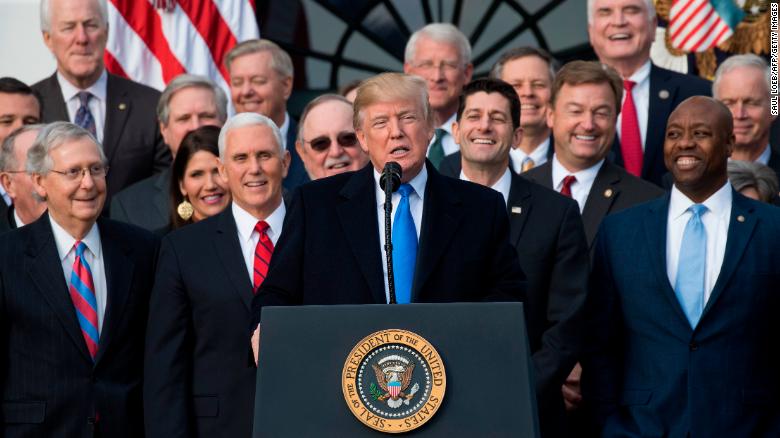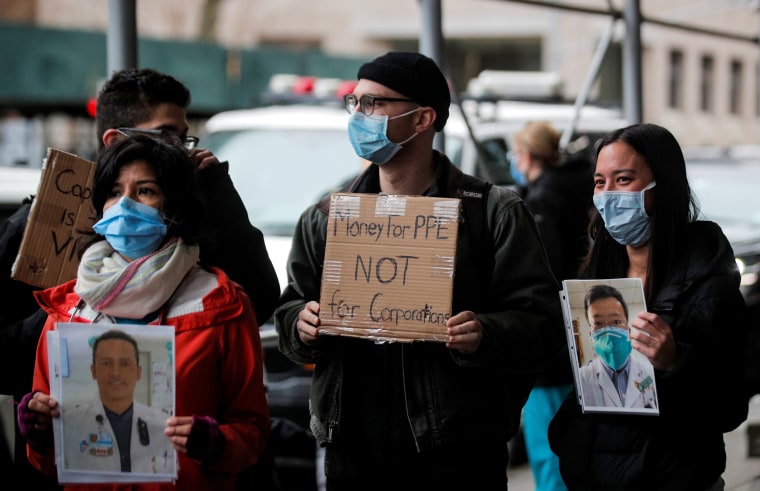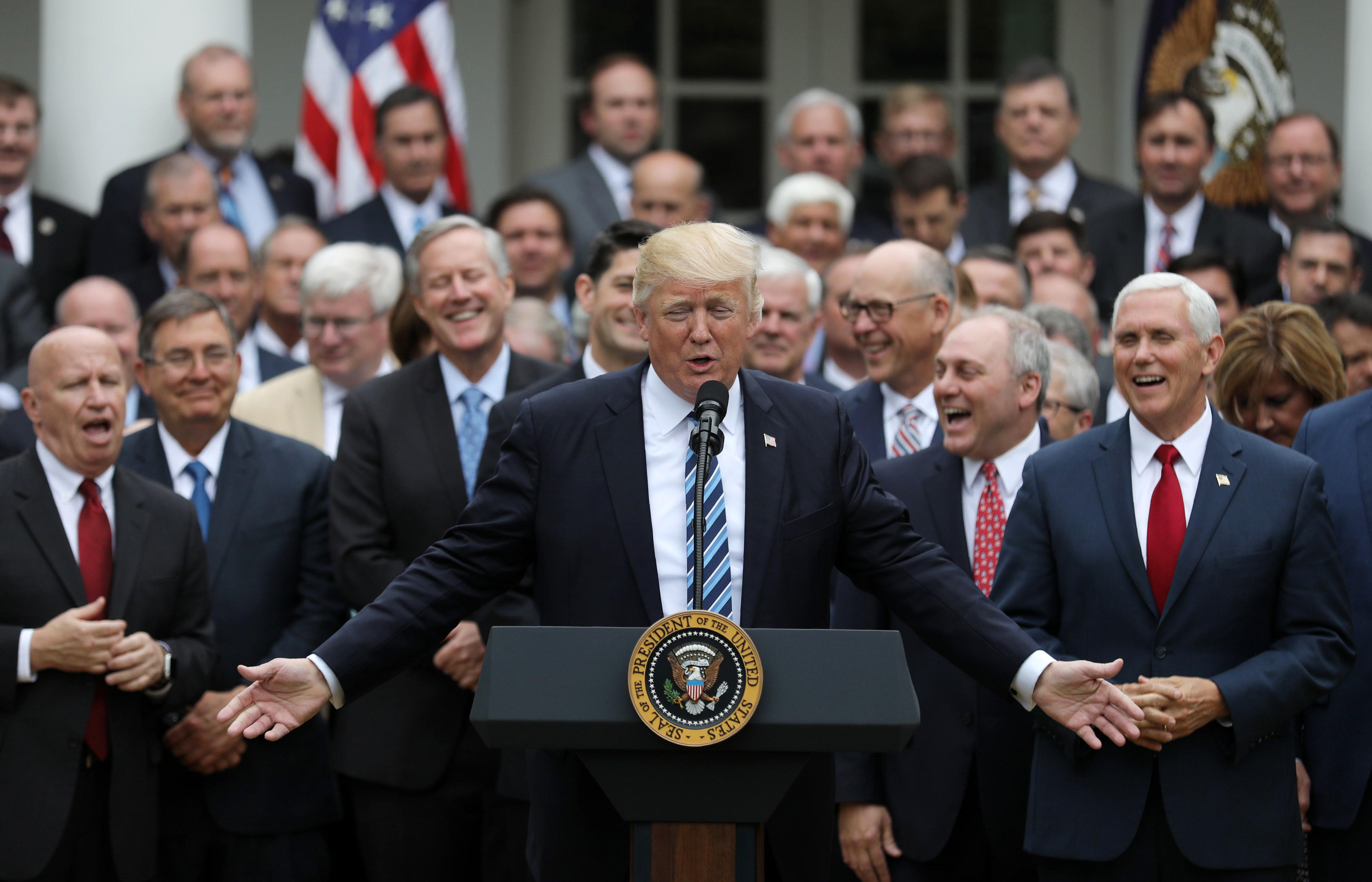Five Minutes of Hot Tea
This gay guy’s hilarious rant about small town Trump supporters is absolute perfection
By Daniel Villarreal June 10, 2020
Read About The Tarbaby Story under the Category: About the Tarbaby Blog
By Daniel Villarreal June 10, 2020

(Reuters) – New U.S. solar installations will increase by a third this year, a report published on Thursday showed, as soaring demand by utilities for carbon-free power more than outweighs a dramatic decline in rooftop system orders for homes and businesses due to the coronavirus pandemic.
The solar industry will install 18 gigawatts this year, enough to power more than 3 million homes, according to the report by the U.S. Solar Industries Association and energy research firm Wood Mackenzie. That is 9% less than the group’s forecast before the outbreak prompted construction delays, weakened consumer demand and tightened access to financing.
But utility-scale solar is on track for a record year, the report said, with 14.4 GW of new capacity expected to be installed in 2020. State renewable energy targets and solar’s low cost are underpinning the sector’s robust demand.
Risks to the sector’s medium and long-term growth, however, include increased capital costs due to weak markets, reduced demand from commercial and industrial customers experiencing financial hardship, and delays in utility procurement plans.
SEIA reduced its five-year solar installation outlook by about 3% to 113 GW, citing “considerable uncertainty” caused by the pandemic.
Solar accounted for 40% of new U.S. capacity additions in the first quarter, ahead of natural gas and wind.
The smaller market for residential and commercial systems has been hit hard by the pandemic due to stay-at-home orders that slowed construction and selling. Home installations are expected to be down 25% this year, the report said, recovering to rise 26% next year.
It will be several years before the sector reaches installation levels that had been forecast before the outbreak.
Installations in the non-residential segment, which includes rooftop systems for businesses, will be down 38% this year, the report added.
(Reporting by Nichola Groom; Editing by Richard Chang)
THE BUNKER BOY – Randy Rainbow Song Parody
***NEW VIDEO***Have you guys seen the president..? 🔦🤣🌈🦁🎶 #BunkerBoy
Posted by Randy Rainbow on Sunday, 7 June 2020
Food justice is racial justice. As the nation rises up to protest atrocities against Black people, here are some organizations working to advance Black food sovereignty.

Protestors march in Philadelphia on June 1, in the aftermath of widespread unrest following the murder of George Floyd, Breonna Taylor, Ahmaud Arbery, and others.
Food justice is racial justice. Food and agriculture, like everything in this country, are deeply intertwined with our nation’s entrenched history of slavery and structural racism. Our food system actively silences, marginalizes, and disproportionately impacts people of color, who are also being hardest hit by COVID-19.
As Americans rise up to respond to the deaths of George Floyd, Breonna Taylor, Ahmaud Arbery, and countless others, and to the ongoing violence, suppression, and brutality facing the Black community, we hope this list of organizations working to strengthen food justice, land access, and food access in the Black community will inform, inspire, and energize you to show up for racial justice.
Black Church Food Security Network works to connect Black communities and other urban communities of color with Black farmers in hopes of advancing food and land sovereignty. Read more.
Black Dirt Farm Collective is a collective of Black farmers, educators, scientists, agrarians, seed keepers, organizers, and researchers guiding a political education process.
Black Urban Gardeners and Farmers Cooperative of Pittsburgh works with Black communities in Pittsburgh, Pennsylvania, to grow food and to share Black cultural traditions through a farm, youth program, and policy work. Read more.
Black Urban Growers (BUGS) is committed to building networks and community support for growers in both urban and rural settings. Through education and advocacy around food and farm issues, it nurtures collective Black leadership.
Castanea Fellowship offers a two-year fellowship for diverse leaders working for a racially just food system in any of the areas of health, environment, agriculture, regional economies, or community development. Read more.
Cooperative Food Empowerment Directive (CoFED) is a queer and transgender people of color-led organization that partners with young folks of color to build food and land co-ops.
Detroit Black Community Food Security Network ensures that Detroit’s African American population participates in the food movement through urban farming, youth education programs and the much-anticipated Detroit People’s Food Co-op. Read more.
Family Agriculture Resource Management Services (FARMS) is a legal nonprofit, committed to assisting Black farmers and landowners in retaining their land for the next generation. Read more.
Federation of Southern Cooperatives/Land Assistance Fund is a non-profit cooperative association of Black farmers, landowners, and cooperatives, with a primary membership base in the Southern States.
Food Chain Workers Alliance is a coalition of worker-based organizations whose members plant, harvest, process, pack, transport, prepare, serve, and sell food, organizing to improve wages and working conditions for all workers along the food chain. Read more.
Food First works to end the injustices that cause hunger through research, education, and action.
Freedom School Demonstration Farm runs a Fresno, California-based program aimed at empowering Black and brown youth to grow their own food. Read more.
HEAL Food Alliance brings together groups from various sectors of movements for food and farm justice to grow community power, develop political leadership, and exposing and limiting corporate control of the food system. Read more.
The Land Loss Prevention Project responds to the unprecedented losses of Black-owned land in North Carolina by providing comprehensive legal services and technical support to financially distressed and limited resource farmers and landowners. Read more.
The National Black Farmers Association is a non-profit organization representing African American farmers and their families in the United States.
National Black Food and Justice Alliance organizes for Black food and land, by increasing the visibility of visionary Black leadership, advancing Black people’s struggle for just and sustainable communities, and building power in our food systems and land stewardship. Read more.
New Communities Land Trust is a grassroots organization that has worked for more than 40 years to empower African American families in Southwest Georgia and advocate for social justice. Read more.
The Northeast Farmers of Color Land Trust advance land sovereignty in the Northeast through permanent and secure land tenure for Indigenous, Black, Latinx, and Asian farmers and land stewards.
Planting Justice works to empower people impacted by mass incarceration and other social inequities through a nursery, land trust, and various community farming efforts. Read more.
Restaurant Opportunities Centers United is fighting to improve wages and working conditions for the nation’s restaurant workforce. Read more.
Sankofa Farms seeks create a sustainable food source for minorities in both rural and urban areas located in Durham and Orange County, North Carolina.
The Seeding Power Fellowship is an innovative 18-month, cohort-based food justice fellowship program. Read more.
Soil Generation is a Philadelphia-based Black- and Brown-led coalition of growers building a grassroots movement through urban farming, agroecology, community education, and more. Read more.
Soul Fire Farm is a Black, Indigenous, and people of color-centered community farm committed to ending racism and injustice in the food system. Read more.
Southeastern African American Farmers’ Organic Network is a regional network for Black farmers committed to using ecologically sustainable practices to manage land, grow food, and raise livestock that are healthy for people and the planet. Read more.
Want more? Read our ongoing coverage of the many worthwhile efforts to expose and address structural inequities in the food system.
Without more support, the impact of losing markets could be massive to farmers, eaters, and regional economies.

San Francisco’s Heart of the City Farmers’ Market has been an oasis of fresh, farm-direct produce in a neighborhood dominated by fast food and liquor stores since 1981. It makes a variety of local produce available to a diverse population of shoppers from around the city and provides income for 82 farmers and food artisans.
Each year, the market also matches low-income shopper’s produce purchases, resulting in $1.5 million in food assistance, making it the largest distributor of EBT of all farmers’ markets in California. COVID-19 has spiked demand for these services, to the point that lines now wrap around the block. Unfortunately, the virus has also strained the nonprofit’s budget and put all of that good work in jeopardy.
Farmers’ markets operators—the organizations and individuals who plan, coordinate, and run America’s farmers’ markets—are engaging in herculean efforts to protect their communities from COVID-19. In the case of Heart of the City, this means crowd control measures to limit the number of shoppers, pre-order options, and the elimination of sampling and touching produce before shopping, among other strategies.
Farmers’ markets have always been hubs for innovation. When farmers have opted or been forced out of the traditional supply chain, America’s 8,000 farmers’ markets have served as a lifeline to their businesses, filling a vital role to move their goods from field to plate. Now, in this time of crisis, these markets have had to devise rapid solutions. Apart from these efforts, emerging research suggests sunlight effectively kills COVID-19, adding more support to the idea that farmers’ markets may be the safest place to shop for groceries during the pandemic.
“There are benefits to visiting a farmers’ market in light of coronavirus … you’re outside, there’s fresh air moving, and the supply chain is shorter,” Yvonne Michael, an epidemiologist at Drexel University School of Public Health, told WHYY recently.
But keeping these markets safe is very expensive for the organizations that run them. For example, Heart of the City market expects to lose almost $200,000 by the end of the year because of a drop in attendance by vendors, who pay a modest fee to participate. These fees serve as the backbone of the market’s budget. And yet, many vendors have been unable to attend due to farmers’ health concerns, age, and labor shortages on their farms. At the same time, the market anticipates spending over $80,000 to maintain health and safety measures, including extra staff and equipment to maintain social distancing.

Yerena Farms, one of the vendors at the Heart of the City Farmers’ Market in San Francisco. (Photo courtesy of Heart of the City)
The Heart of the City market is far from alone. In a recent, as-yet unpublished Farmers Market Coalition member survey, 74 percent of the organizations that responded reported decreased income, while 93 percent report added costs, including the purchase of PPE for market staff, rental of more handwashing stations, new software or services, and additional staff to rearrange market layouts and monitor customer traffic. In a similar survey by the California Alliance of Farmers Markets (also unpublished), nearly 20 percent of farmers’ market operators reported concern that they may not survive the economic impacts of COVID-19.
The impact of losing farmers’ markets would be massive. They facilitate an estimated $2.4 billion dollars in sales for small and mid-scale farms in the U.S. each year.
“Without direct assistance for our state’s farmers’ markets, many of which already operate on a shoestring budget and an all-volunteer staff, we risk losing this vital outlet, drastically affecting the livelihoods of farmers,” says Robbi Mixon, director of the Alaska Farmers Market Association. “Small to medium scale farms are the cornerstone of local food systems. If farmers’ markets disappear, these farmers lose market access and economic stability.”
The cruel irony is that interest in local food and demand for emergency food needs have skyrocketed during the pandemic, making the work of farmers’ market operators more important than ever. And yet, they have largely been left out of relief efforts, both public and private.

A vendor’s sign about maintaining physical distance at a farmers’ market in Boone, North Caroline. (Photo courtesy of the Farmers Market Coalition)
And the fact that farmers’ markets are some of the safest places to shop at this moment hasn’t happened by accident. It’s thanks to the committed efforts of people who work hard for their communities. These are very lean organizations and many are close to a breaking point, especially since they have been left out of grants and recovery funds that have been made available to other sectors of the economy. For example, many farmers’ market operators were not eligible for the Paycheck Protection Program because of their nonprofit incorporation type. Only 501(c)(3) nonprofits are eligible for these funds and most farmers’ markets are not.
The coronavirus pandemic has laid bare many of the structural problems of our food system, not the least of which is the vital and underappreciated work that farmers’ market operators engage in to keep farmers in business and keep people fed.
The federal government needs to make the Paycheck Protection Program available to farmers’ market operators and provide grants to ensure that they are able to keep markets open and safe. If this work is to continue, farmers’ market operators will need the support of public and private entities as they develop and implement recovery plans.
Meanwhile, we hope the private individuals and foundations who can will step up and donate to support the operation of their local farmers markets. These community institutions have a pivotal role to play—now and in the future—and they’re much too important to lose.

May 26, 2020
Before you call the cops on a Black person…
Posted by NowThis Politics on Tuesday, 26 May 2020

A Tennessee police chief by the name of David Roddy sent a message to his fellow officers on Twitter in response to the death of George Floyd.
On Wednesday, Chattanooga Police Department Chief David Roddy said police officers who didn’t see an issue with the graphic video that showed former Minneapolis police officer David Chauvin kneeling on Floyd’s neck as the 46-year-old repeatedly said, “I can’t breathe,” should quit the force.
“There is no need to see more video. There no need to wait to see how “it plays out”. There is no need to put a knee on someone’s neck for NINE minutes. There IS a need to DO something. If you wear a badge and you don’t have an issue with this…turn it in,” Roddy wrote.
Roddy’s tweet has since gotten over 159,000 likes and 623,000 retweets. According to the Chattanooga Police Department website, Roddy has 24 years of service under his belt.
Floyd was pronounced dead at a local hospital on Monday shortly after his arrest. Since the video starting circulating social media, Chauvin was charged on Friday with third-degree murder and second-degree manslaughter, and all four officers that were involved in the arrest were fired.
Footage of the arrest has also sparked outrage across the country causing protests in cities like Minneapolis, Atlanta, New York, Los Angeles, Denver, Detroit, Dallas, Washington, DC, and more.
Roddy did not immediately respond to Insider’s request for comment.
Read the original article on Insider

At the junction where a police officer was filmed kneeling on George Floyd’s neck as he gasped for air, there were shouts and cheers when it was announced the man had been charged with murder.
“Yes! Chauvin’s been charged with murder,” yelled one man. “We got one of them.”
But for the protesters gathered at 38th St and Chicago Ave, in the south of Minneapolis, any celebrations over the charging of 44-year-old white police officer Derek Chauvin, were short-lived.
People demanded that all four officers involved in the incident that led to the death of Mr Floyd be brought to justice. And what was all this with third-degree murder? He meant to kill him, people insisted It should be first-degree.
There was also agreement that until all four men were charged, the protests – both the peaceful and those that saw a police station and other buildings set ablaze – would continue.
“I can’t say I agree with burning down buildings useful to our community,” said 19-year-old student Tsunami Douglas, claiming there were reports that police had set some buildings alight. “But people have had enough.”
Her friend, Twyla Mowll, 18, said as a young person of colour growing up in south Minneapolis, they would never call the police as nobody knew how it would play out.
“Police officers are trained to serve the people,” she added. “That does not involve shooting or killing, When people have to be protected from the police, there is no point. There needs to be a new system.”
As Hennepin County attorney Mike Freeman announced the charges against Mr Chauvin, further details emerged of the incidents in which Mr Floyd’s throat was stepped on, as he lay on the floor close to Cup Foods grocery, the spot now marked with flowers and photographs.
The charge sheet claimed Mr Chauvin had his knee on Mr Floyd’s neck for eight minutes and 46 seconds. The complaint said that included nearly three minutes after the man had stopped moving and talking.
“Police are trained that this type of restraint with a subject in a prone position is inherently dangerous,” it said.

Amid the anger and dismay, one reaction few if any mentioned was surprise.
This was something that happened all the time, or at least every summer, residents said. “There needs to be a revolution,” said a 20-year-old woman called Macy, who said she was visiting her parents from New York.
“The only reason we got this murder charge was because of the burning of the buildings. So we cannot afford to let that stop,” she said.
“The white people are getting scared. They feel threatened. But America does not want to confront its past. Even Germany examined its Nazi past. Nobody will talk about slavery.”
The other three officers have been named Thomas Lane, Tou Thao and J Alexander Kueng. Mr Freeman, the prosecutor said he considered there could be charges brought against them as well, but declined to suggest what they might be.
At the spot where people took turns to speak on a microphone to the crowd, people demanded all four men were responsible for what had happened. They said none of the officers had stepped in to stop what was being done by their colleague.
“If someone like me is present where there’s a crime, I’d be charged as an accomplice,” said Sadi, a woman who asked to give one name and who said she was in her mid-40’s.
Asked how a system in which young black men repeatedly die at the hands of police could be changed, she said: “We need white people to be allies. We need them to care about this. But we have a racist as president.”
As the banners and placards on display grow, George Floyd joins a mounting list of young African American men – and some women – who have been killed in encounters with the police – Michael Brown in Ferguson, Freddie Gray in Baltimore, and Eric Garner in New York, to name just as few.
In Minneapolis, a 24-year-old black man named Jamar Clark was shot dead by police in 2015. The following year, officers killed Philando Castile, a 32-year-old black man killed by a Minnesota police officer during a traffic stop.
“This happens all the time, but people are saying enough is enough,” said Yasmeen Abdulla, a 26-year-old medical student who lives in the neighbourhood. “People have been dying in police brutality. They want justice.”
He said while the names of the police’s victims varied, there was one constant. He said: “The names are different but they are always the same colour.”

(Bloomberg) —
All of the roughly 200 employees on a produce farm in Tennessee tested positive for Covid-19 this month. In New Jersey, more than 50 workers had the virus at a farm in Gloucester County, adding to nearly 60 who fell ill in neighboring Salem County. Almost 170 were reported to get the disease at a tomato and strawberry greenhouse complex in Oneida, New York.
The outbreaks underscore the latest coronavirus threat to America’s food supply: Farm workers are getting sick and spreading the illness just as the U.S. heads into the peak of the summer produce season. In all likelihood, the cases will keep climbing as more than half a million seasonal employees crowd onto buses to move among farms across the country and get housed together in cramped bunkhouse-style dormitories.
The early outbreaks are already starting to draw comparisons to the infections that plunged the U.S. meat industry into crisis over the past few months. Analysts and experts are warning that thousands of farm workers are vulnerable to contracting the disease.
Aside from the most immediate concern — the grave danger that farmhands face — the outbreaks could also create labor shortages at the worst possible time. Produce crops such as berries have a short life span, with only a couple of weeks during which they can be harvested. If a farm doesn’t have enough workers to collect crops in that window, they’re done for the season and the fruit will rot. A spike in virus cases among workers may mean shortages of some fruits and vegetables at the grocery store, along with higher prices.
“We’re watching very, very nervously — the agricultural harvest season is only starting now,” said Michael Dale, executive director of the Northwest Workers’ Justice Project in Portland, Oregon, and a lawyer who has represented farm workers for 40 years. “I don’t think we’re ready. I don’t think we’re prepared.”
Unlike grain crops that rely on machinery, America’s fruits and vegetables are mostly picked and packed by hand, in long shifts out in the open — a typically undesirable job in major economies. So the position typically goes to immigrants, who make up about three quarters of U.S. farm workers.
A workforce of seasonal migrants travels across the nation, following harvest patterns. Most come from Mexico and Latin America through key entry points like southern California, and go further by bus, often for hours, sometimes for days.
There are as many as 2.7 million hired farm workers in the U.S., including migrant, seasonal, year-round and guest-program workers, according to the Migrant Clinicians Network. While many migrants have their permanent residence in the U.S., moving from location to location during the warmer months, others enter through the federal H2A visa program. Still, roughly half of hired crop farmworkers lack legal immigration status, according to the U.S. Department of Agriculture.
These are some of the most vulnerable populations in the U.S., subjected to tough working conditions for little pay and meager benefits. Most don’t have access to adequate health care. Many don’t speak English.
Without them, it would be nearly impossible to keep America’s produce aisles filled. And yet, there’s no one collecting national numbers on how many are falling sick.
“There is woefully inadequate surveillance of what’s happening with Covid-19 and farm workers,” said Erik Nicholson, a national vice president for the United Farm Workers. “There is no central reporting, which is crazy because these are essential businesses.”
On the Tennessee farm where workers caught the virus, only a very few showed any symptoms. After an initial worker tested positive for Covid-19, all employees at Henderson Farms in Evensville were given tests out of an “abundance of caution,” revealing the infection had spread among all of them. The workers are now all in isolation at the farm, where they live and work.
“We take our responsibility to protect the essential workers feeding the nation through the pandemic seriously,” Henderson Farms Co. said in a statement. “In addition to continuing our policy of providing free healthcare, we have implemented additional measures to support workers directly impacted by Covid-19, including those in isolation as per the latest public health guidelines. We are working closely with public health officials in Rhea County, Tennessee, to ensure we can continue to deliver our high standard of care as we support our workers and our community through these unprecedented times.”
Critical Months
May and June mark the start of a critical few months when migrant workers head to fields in North America and Europe to plant and gather crops. Travel restrictions amid the pandemic are already creating a labor squeeze. In Russia, the government is calling on convicts and students to fill in the labor gap on berry and vegetable farms. In the U.K., Prince Charles took to Twitter to encourage residents to #PickForBritain. Farmers in western Europe usually rely on seasonal workers from eastern Europe or northern Africa.
In Canada, migrant workers often come from Jamaica, Guatemala and Mexico. They’re typically housed on farms, with two or four people sharing a room, depending on if there are bunk-beds, said Colin Chapdelaine, president of BC Hot House, a greenhouse farming company that grow tomatoes, peppers and cucumbers in Surrey, British Columbia.
All the houses are audited and approved by regulators with guidelines for how much kitchen and bathroom space to provide, but “Covid has kind of turned that on its head,” he said.
“It’s a precarious situation if something happens and it flows through a greenhouse and you can’t pick your crop,” Chapdelaine said. “We’re taking huge precautions to make sure everyone comes in suited and masked up. You have to do all the right things and still hope for the best.”
In the U.S., migrant farm workers primarily come from Mexico and Latin America.
President Donald Trump has sought to maintain the flow of foreign workers to U.S. farms during the pandemic, waiving interview requirements for some guest workers when consular offices shut down and exempting them from a temporary immigration ban. But so far, the administration hasn’t created rules to protect the workers. Democratic Representative Jimmy Panetta of California and 71 other members of Congress urged in a letter last week that the next coronavirus relief package include funding dedicated to combating spread of the virus among farm workers.
Even before infections started to creep up, there weren’t enough workers, causing harvest issues in parts of the U.S. Some prices started to move up. A 2-pound package of strawberries is fetching about 17% more than it was last year, and a pint of cherry tomatoes is 52% higher, USDA data as of May 22 show.
So far, though, the price impact has been limited. As restaurants shuttered during virus lockdowns, many farmers lost a key source of produce demand, creating some supply gluts.
Now, stay-at-home restrictions are easing in all 50 states, and some restaurants are opening back up. Meanwhile, labor shortages could get worse as illness among farm workers deepens.
“The cost will go up, and there will be a little bit less available,” said Kevin Kenny, chief operating officer of Decernis, an expert in global food safety and supply chains. “You really will see some supply issues coming.”
Perishable crops that require more hands on labor to pick are the most at-risk of disruptions, including olives and oranges, Kenny said.
In Florida, oranges are “literally dying on the vines” as not enough migrants can get into the country to pick the crops and things like processed juice will probably cost more in the coming months, he said.
When the virus spread among America’s meat workers, plants were forced to shutter as infections rates topped 50% in some facilities. Prices surged, with wholesale beef and pork more than doubling, and grocers including Kroger Co. and Costco Wholesale Corp. rationed customer purchases. Even Wendy’s Co. dropped burgers from some menus. After an executive order from Trump, plants have reopened, but worker absenteeism is restraining output. Hog and cattle slaughter rates are still down more than 10% from last year.
The produce industry could see similar problems because workers face some of the same issues. They sometimes work shoulder to shoulder. They are transported to and from job sites in crowded buses or vans. They often come from low-income families and can’t afford to call in sick or are afraid of losing their jobs, so they end up showing up to work even if they have symptoms.
“A lot of people are concerned that the summer for farm workers will be like the spring for meat packers,” said David Seligman, director of Towards Justice, a nonprofit law firm and advocacy organization based in Denver.
There’s “a lot of worker fear because of the asymmetry of power in this industry,” Seligman said. “We’re hearing anecdotal reports. Gathering information about farm workers is very hard because of how scared and how isolated they are.”
There are some key differences between the two industries. For one, farm workers spend most of their time outside, and some research has shown that the virus is less likely to be spread outdoors. Meanwhile, meat workers are piled into cold, damp factories where infectious diseases are particularly hard to control.
In other ways, farm workers are more exposed. Living conditions can be even more cramped, with close-together bunks and communal cooking and bathroom facilities that make physical distancing extremely difficult.
Plus, the workers move around so much, meaning increased chances of exposure for themselves and more chances that sick individuals can spread the illness to other communities.
In Oregon, a farm worker often may move a half dozen times during the summer, working for new growers and housed in new labor camps as they shift from harvesting cherries to strawberries to blueberries to pears, said Dale of the Northwest Workers’ Justice Project.
Nely Rodriguez is a former farm worker who is now an organizer with the Coalition of Immokalee Workers in Immokalee, Florida, a major tomato growing area. She said that some farms are taking steps to protect migrants, such as having buses make more trips so workers won’t be as cramped and requiring them to wear masks, as well as providing more hand-washing stations and sanitizer.
Lisa Lochridge, a spokeswoman for the Florida Fruit and Vegetable Association, also pointed to increased measures to protect workers and said some employers even set aside separate housing to be used for a quarantine area if necessary. Cory Lunde, of the Western Growers Association, said farm owners are staggering start times, disinfecting buses and increasing distances between workers, both in the field and in packing facilities and offices.
But protection measures can be spotty, said Rodriguez of the Coalition of Immokalee Workers. There aren’t yet any farm specific Covid-19 safety protocols from the federal government.
Developing Guidance
The USDA is “diligently working” with the the U.S. Centers for Disease Control and Prevention and the Occupational Safety and Health Administration “to develop guidance that will assist farmworkers and employers during this time,” the agency said in an emailed statement.
“Additionally, considering the seasonal and migratory nature of the workforce, we are working to identify housing resources that may be available to help control any spread of Covid-19,” the USDA said.
Harvests take place at different times across the country, depending on the weather and the crop. That means when gathering finishes in an early state like Florida, workers will travel into areas such as Georgia, North Carolina, Indiana and New Jersey, said Rodriguez of the Coalition of Immokalee Workers. They’ll often make the journey on old school buses rented by employers, sitting for 7 or 8 hours at a time with 45 people crammed in.
“If there is a bunch of farm workers here that are sick, they can essentially spread this virus to other rural communities,” Rodriguez said.
Many farm workers come from indigenous communities in southern Mexico and don’t speak English or Spanish as their first language, so they don’t have adequate information on the pandemic in a language they can understand, said Bruce Goldstein, president of Farmworker Justice, a national advocacy group.
They typically don’t have easy access to coronavirus tests, and many are undocumented so they are concerned about reporting illnesses, he said.
“They’re marginalized in Mexico. They’re similarly marginalized here,” Goldstein said. “People like that are incredibly vulnerable to Covid-19.”
For more articles like this, please visit us at bloomberg.com



